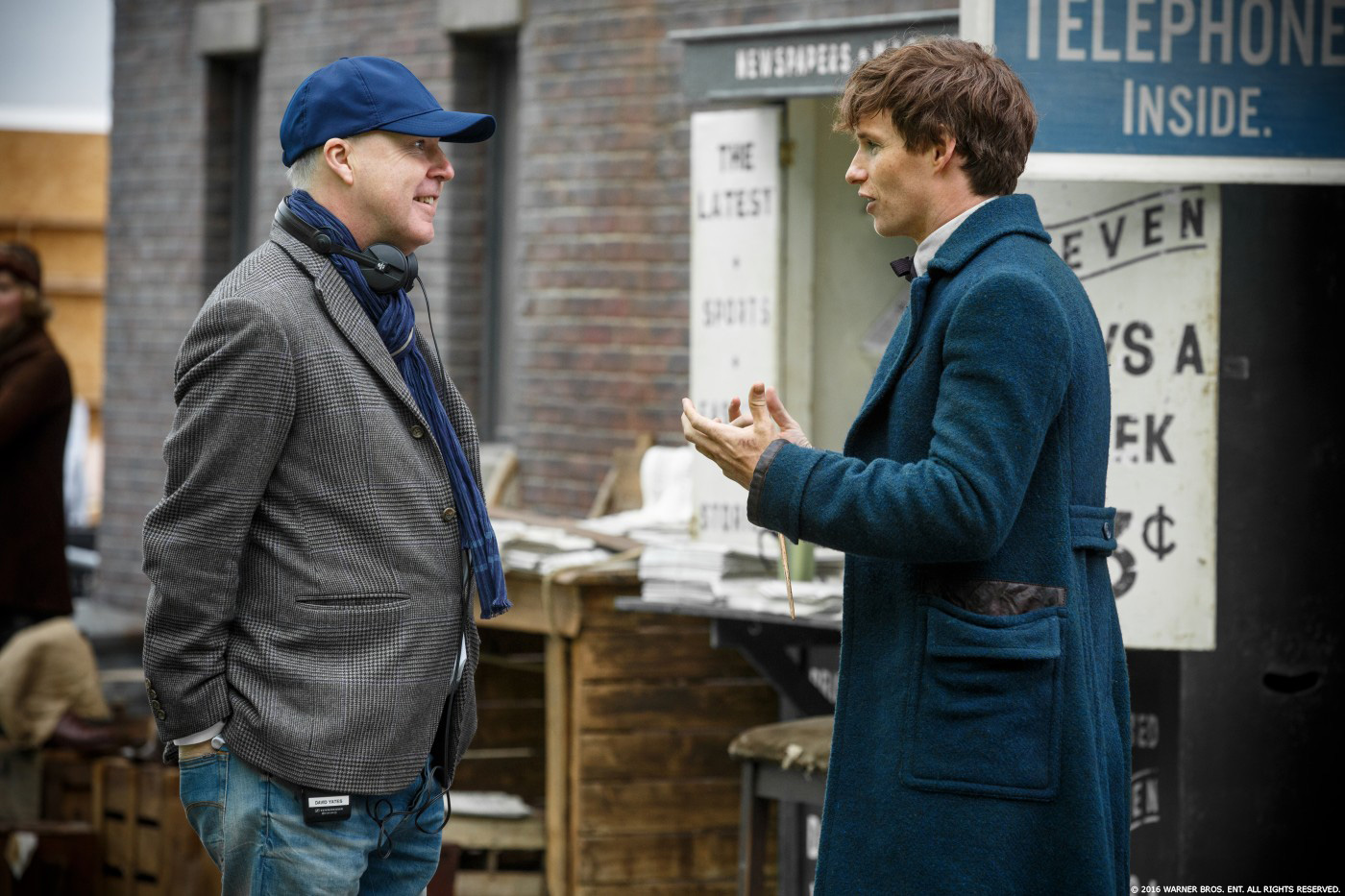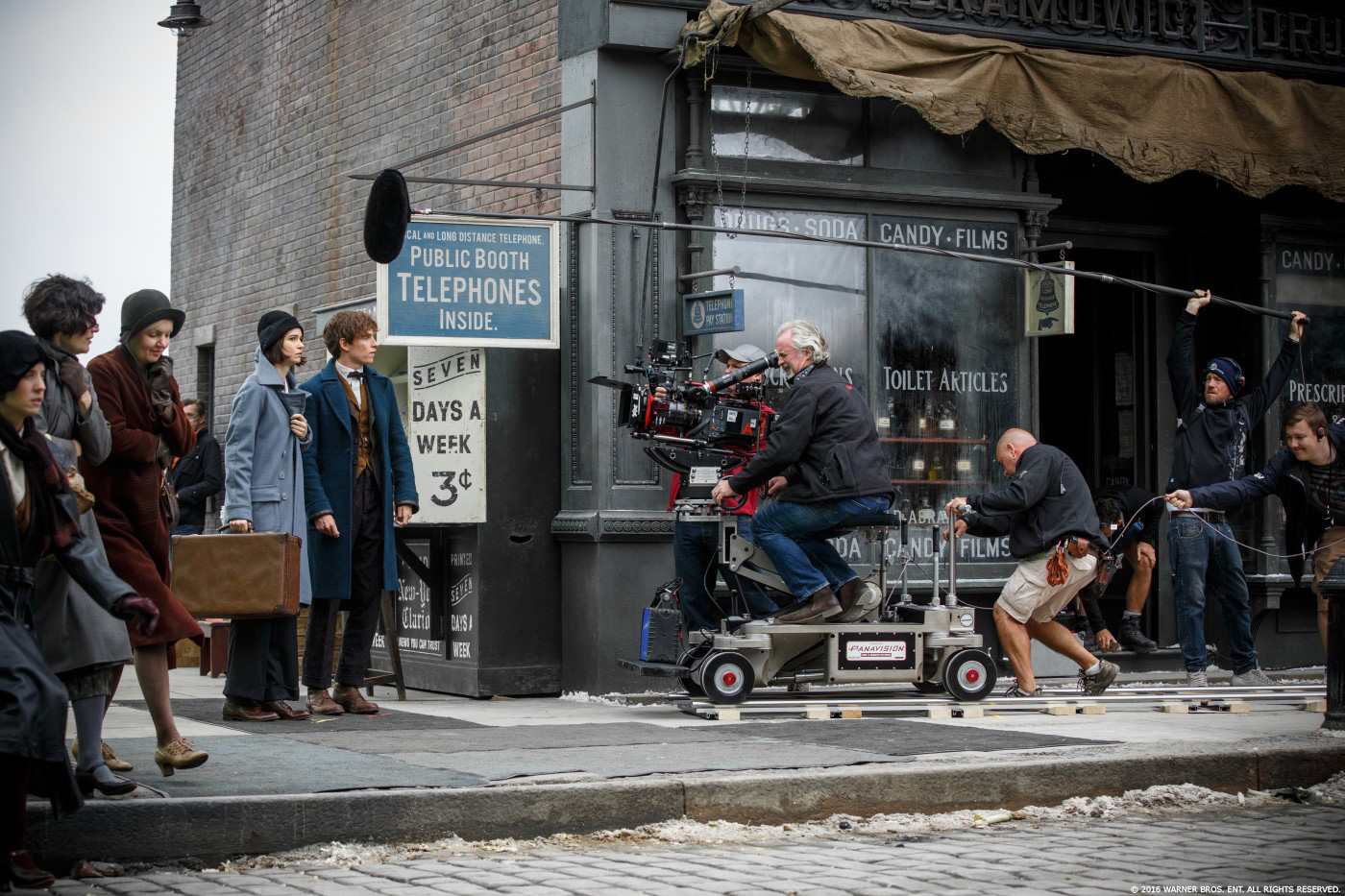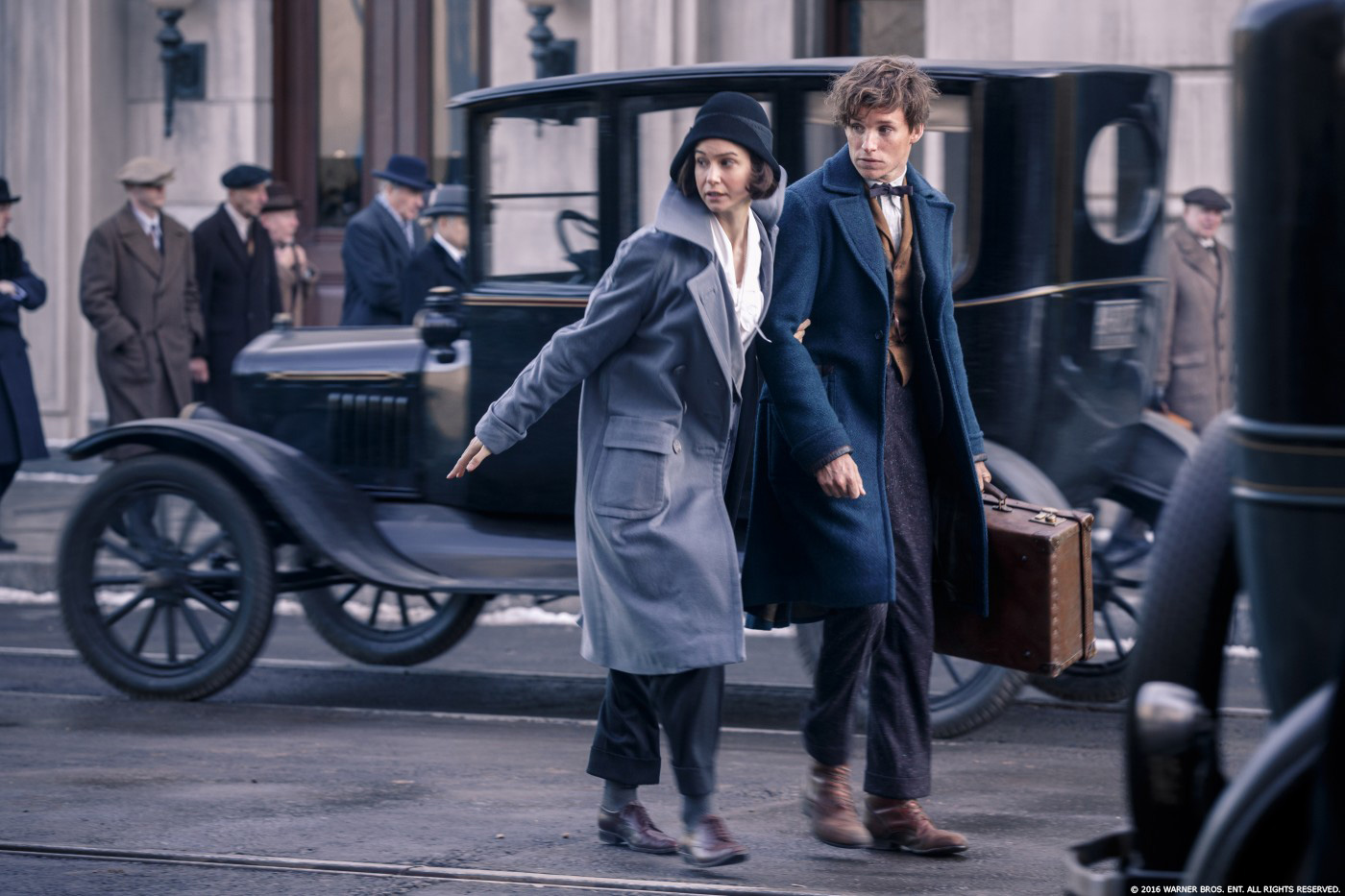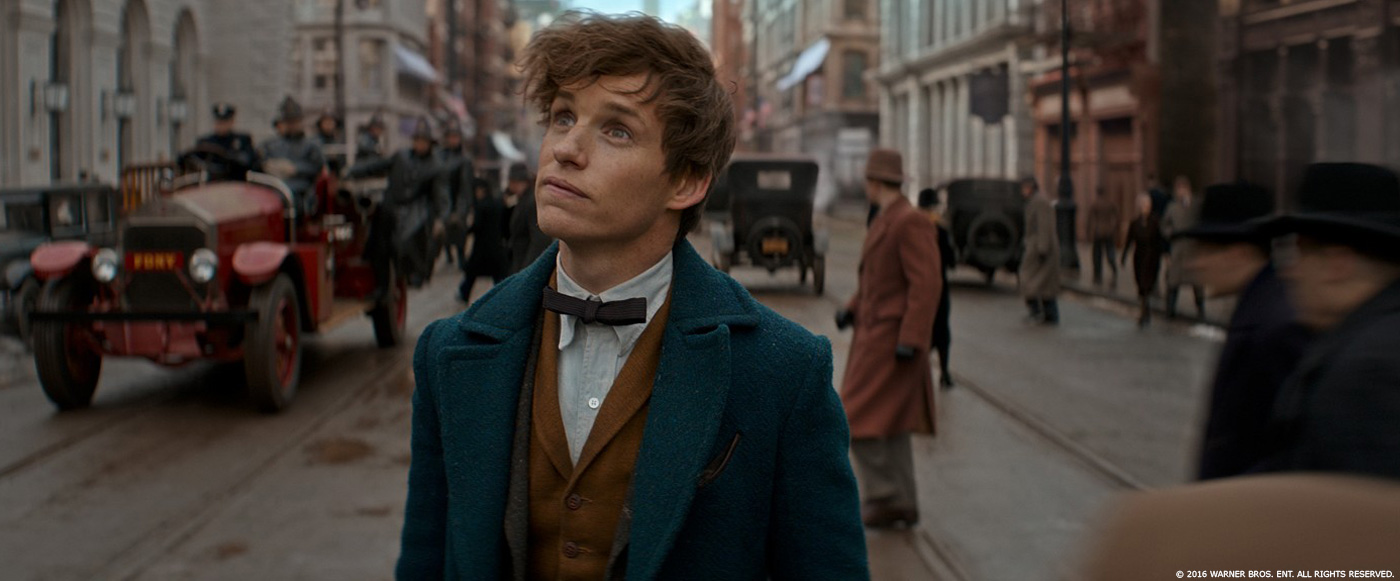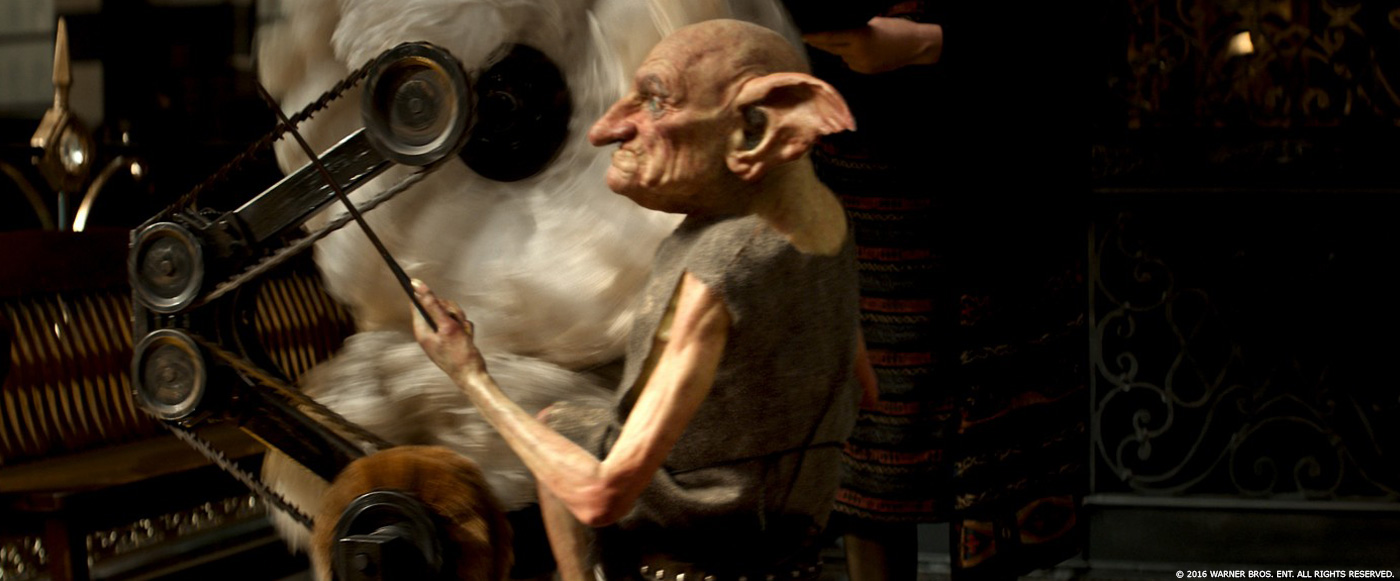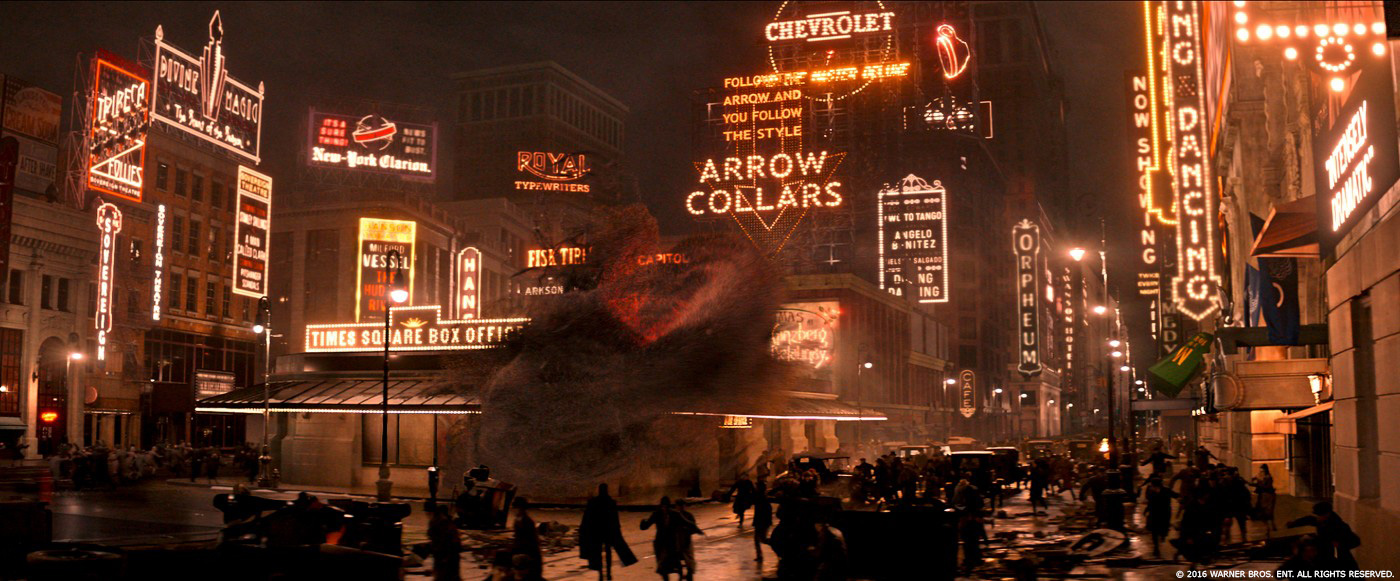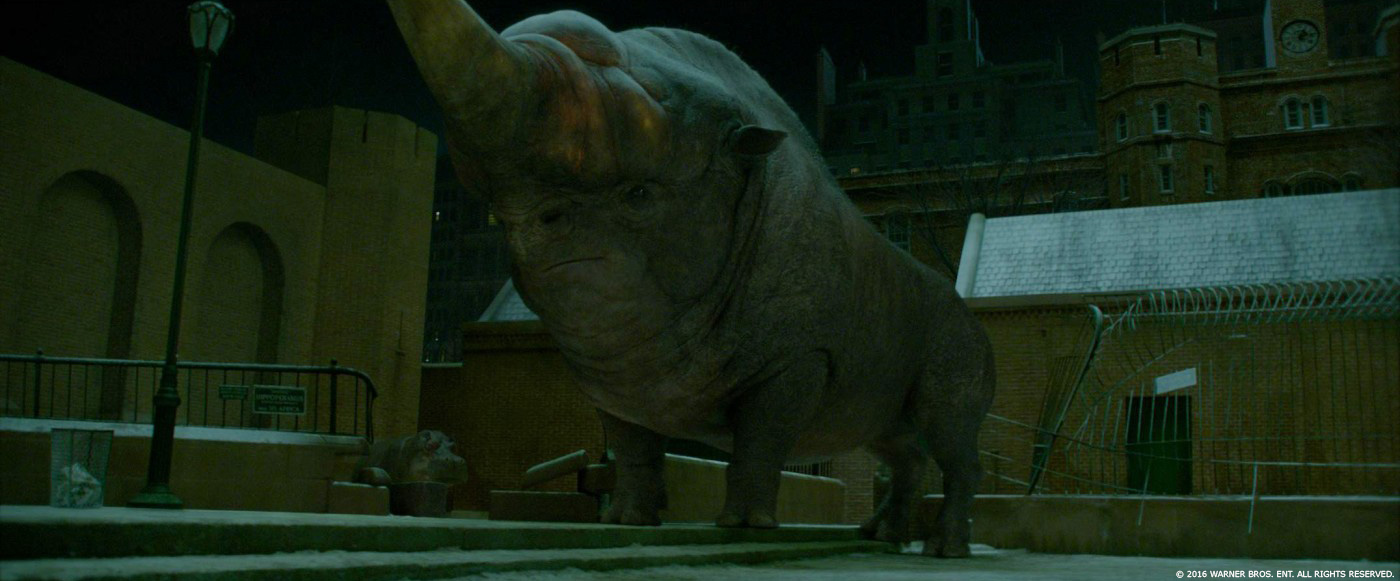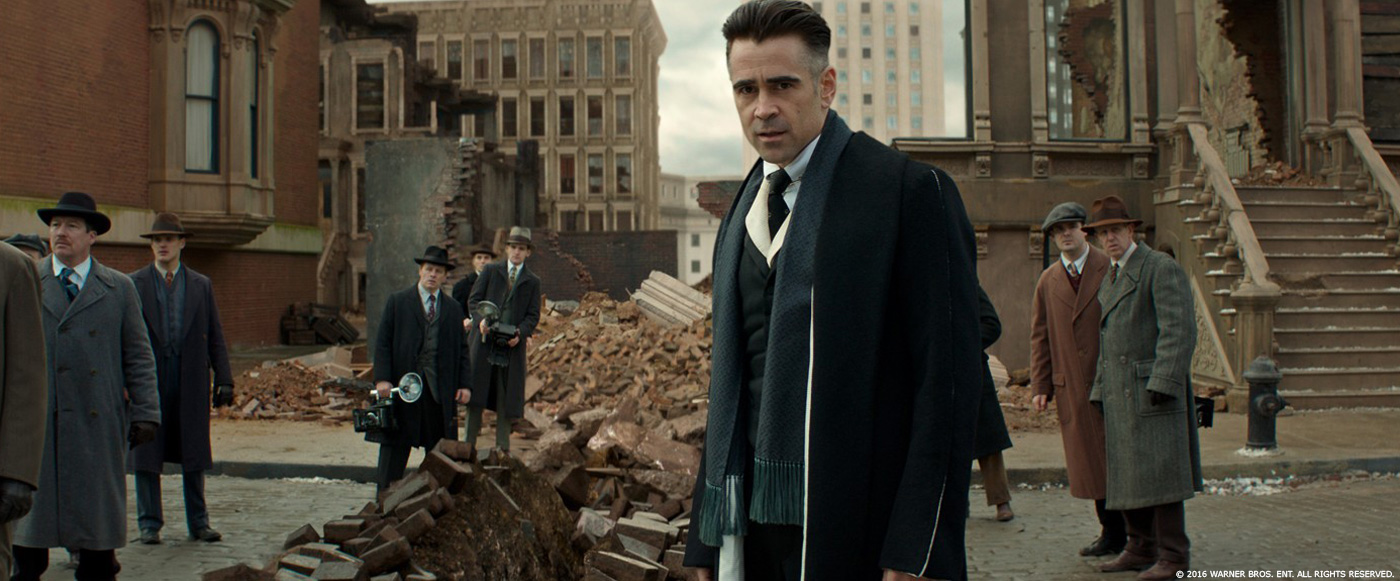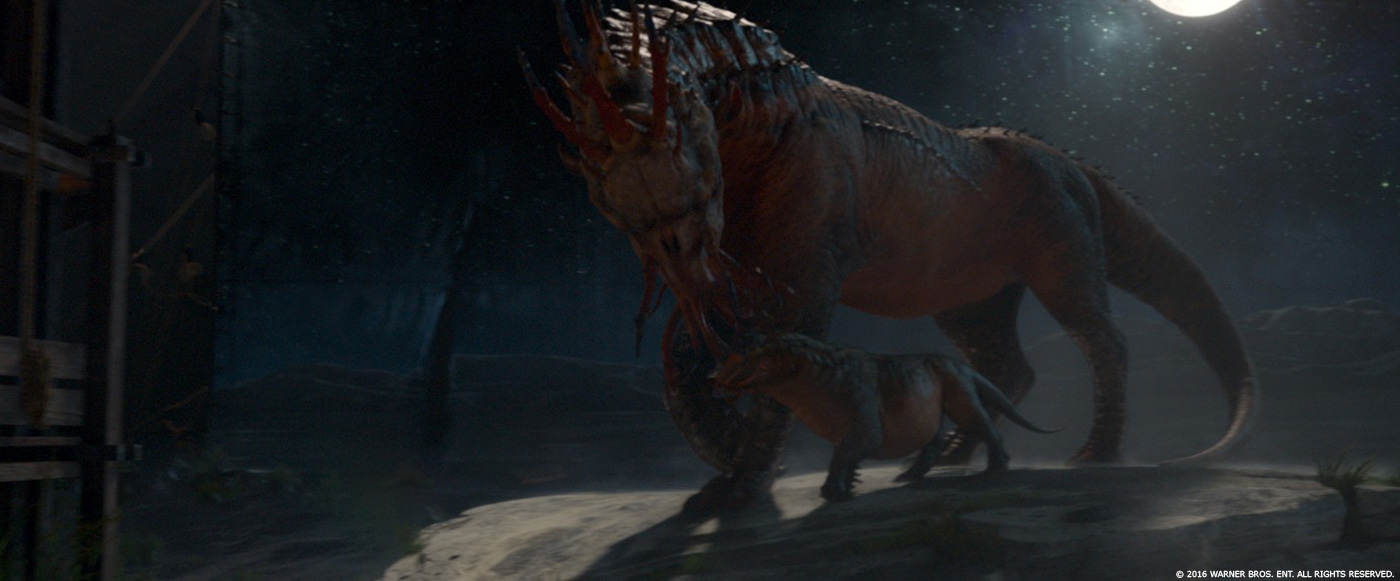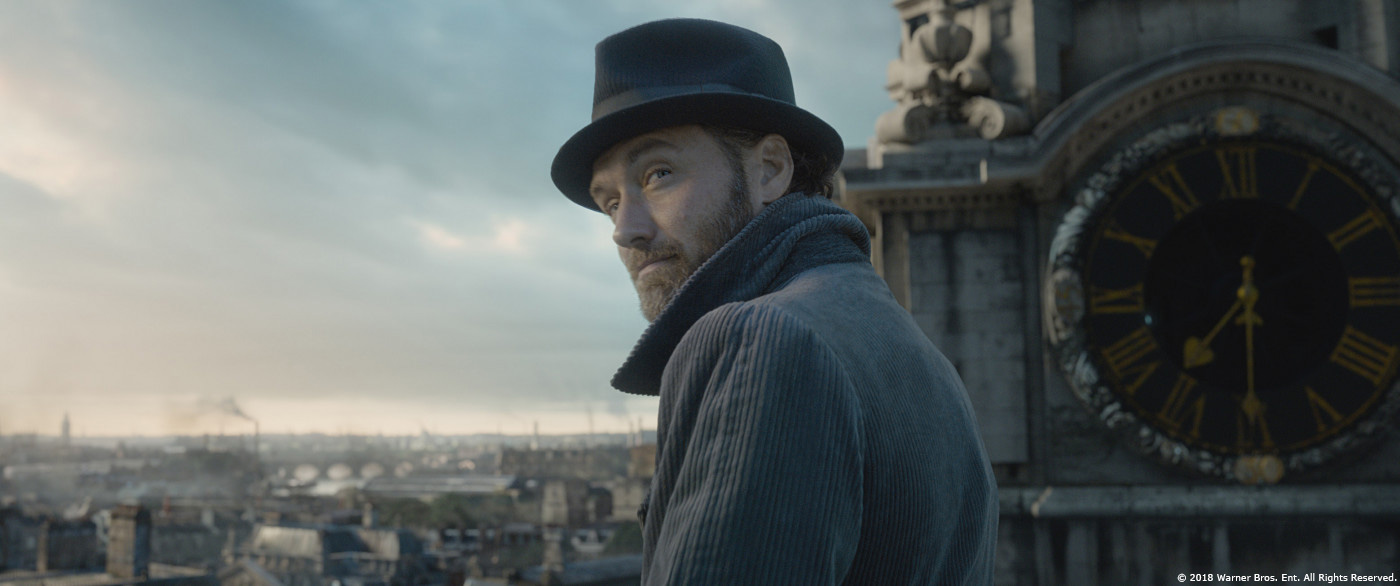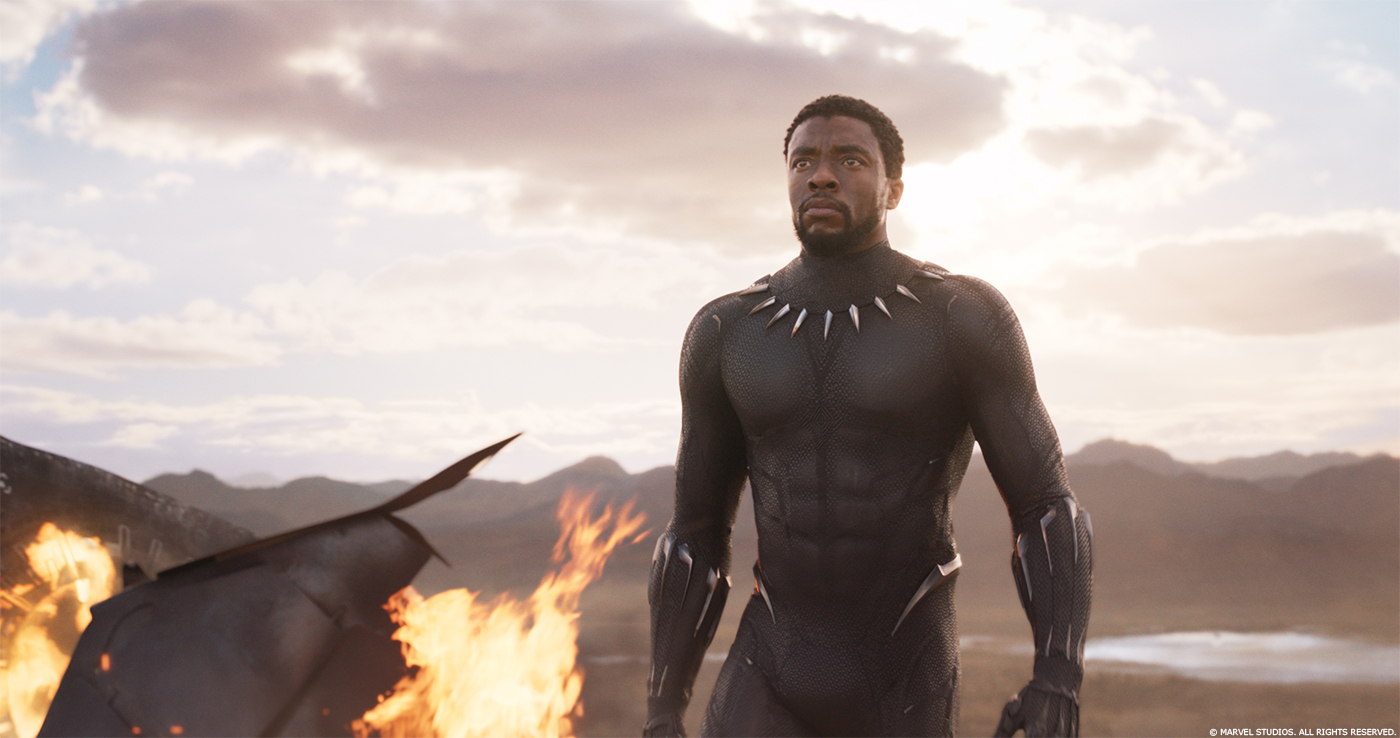Tim Burke is working in the visual effects for the past thirty years. He won an Oscar for the Best VFX for GLADIATOR. He supervised the VFX of 7 of the 8 Harry Potter movie. After a trip in the jungle with LEGEND OF TARZAN, he is back in the Harry Potter universe with FANTASTIC BEASTS AND WHERE TO FIND THEM.
What was your feeling to be back in the Harry Potter universe?
I was very happy to be back in the world of JKRs magical imagination, but it felt quite different working on BEASTS to the previous HARRY POTTER films, it’s a very different film altogether, set in a much earlier period, 1926 New York, with completely different actors, without the familiar faces of Dan, Emma and Rupert. It was an exciting new challenge.
How was this new collaboration with director David Yates?
Working with David doesn’t really change, he is incredibly collaborative, he lets us all contribute to the making of the film in so many different ways that its always a great joy. We had a great creative input in designing the creatures and the big action set pieces.
How did you split the work with VFX Supervisor Christian Manz?
We worked on the film together until the script settled down and we could start to decide which facilities would be working on which characters and sequences. As much as possible we wanted to try to not overlap supervising with the facilities, and tried to split the work up so that the film was evenly spread across several companies, with each of us looking after those particular vendors. We had realised early on that on top of all of the many creatures and sets to be built there were two very large areas of work, newts case, it’s environment and creatures, and the Obscurus and it’s environments and massive destruction sequences. So we split those two things between us, Christian handled the Case and I did the Obscurus, after that we split the work evenly so that creatures and their environment were paired together.
How did you use your experience on the Harry Potter movies for Fantastic Beasts?
Generally the working methodologies were similar, techniques we’d used to film magic sequences were re-utilised, using interactive practical effects and lights where relevant. We revamped a lot of the magic effects for BEASTS but still referenced the HP films for their style.
Have you changed some of your methodology?
The biggest change would be the way we postvized the whole movie with our in-house team, in fact the whole first assembly of the film at over 3 hours.
Can you tell us more about the previs and postviz process?
We started previs in early pre production building a large team of artist from The Third Floor, Nvizage and Proof, supplemented by half a dozen animators hand picked by Pablo Grillo, our in house animation director. We designed set piece sequences incorporating the animation and character studies of each of the creatures that our creature concept team had been doing. Previz was used on set as a guide for puppeteers and actors a like, we shot every scene faithfully matching the previz in most instances.
We kept our team of artist on during the start of filming then expanded them into an even larger team, adding a tracking and compositing department, with two DMP artists and a few additional modellers. We effectively made a small facility of about 50 artists, who worked for about 6 months from the middle of the shoot up until the delivery of the directors cut to the studio, and we postvized every creature and environment into every shot, so that David could show the studio a complete representation of how the film was going to play.
This also then allowed him to adjust his edit, get the timing of actions sequences working and see what each of the creatures brought to the film, where they worked and where scenes needed developing further in post.
Can you describe to us one of your typical day during the post?
As we supervised postviz during our production days, post really started mid shoot, arriving on set at 7:30, preparing for the days shoot, and the first set up, then racing back to discuss the days work with the various artists, we had two edit suites running as well. We’d spend most of the day on set then catch up again with previz at the end of the day on wrap.
We moved to Soho when filming was over and spent more time with our in-house previz team and our external facilities. We were working across three time zones so the day was structured around cineSyncs and vendor visits in London.
It’s a show full of magical creatures. What was your approach about it?
We wanted the creatures to have magical properties, but not be too fantastical, we designed them so that they were similar to real world animals but different in certain ways, so that they felt ground and real. It was very important that they didn’t become too extreme and unbelievable.
How did you with the director and the art department for the creatures design?
We ran the concept and animation department and developed the creature designs, we’d show David Yates designs on a daily basis, take his notes and develop the creatures further or disregard initial sketches he did think worked. We designed hundreds of different creatures to varying levels of completion.
Which one was the most complicated to created and why?
The Obscurus was the trickiest creature because it was hard to pin down exactly what it was, a repressed malevolent force of evil without form. We went through many different concepts and designs, at one point actually creating a beast which we blocked into shots in Times square, then realised that it was incorrect to have the Obscurus as an actual creature. We settled on a shape shifting membranous twisting black mass, which had to take on different characteristics and personalities which could express emotions, anger, rage, sadness.
Double Negative who did the work, came up with a simple animation system of shapes we could animate in Maya, then use to drive the simulations and FX. However it was hard for the director to understand what was happening until he saw the FX rendered, so the process itself was time consuming and difficult. We couldn’t even start the destruction effects until we’d locked the animation and effects of the Obscurus itself, so it made things very complicated.
How did you simulated their presence on-set and their interactions with the cast?
We had the props department make simple puppets for each of the main creatures, these were then operated by actual pupeteers, led by Robin Guiver. We had the team who played the horse in the stage production of warhorse be our Erumpent, operating a 17ft tall, 20ft long carbon fibre frame. This really helped Eddie and the other actors understand what the creature was doing and where it was. We’d shoot a few rehearsals with the puppet in, then shoot clean after the actors and camera operator got used to the performance.
And which creature is your favorite one?
Probably the Demiguise, because he has a lovely innocence about him.
Which sequence was the most complicated to created and why?
It would have to be the Obscurus scenes for all of the previous reasons I’ve mentioned.
Can you tell us more about the New York creation?
We recced in New York and Stuart Craig noted details of buildings and architectural styles that he wanted to recreate. He then went about designing an 8 acre set on the backlot which was on a grid street layout like New York, but each block was a different stye of architecture, representing a different area of new York we’d use in the film. There were Tenements, Brownstones, The Diamond District (Tribeca) and 5th Avenue. We covered up the architecture we weren’t using in green cloth and still utilised the roads and pavements for traffic. We shot with crowds of up to 300 and 40 practical period vehicles. The actors were primarily shot on the practical area of set and then we extended the streets in each direction with the matching digital architecture for that area. We did an extensive 2 month stills shoot of textures and buildings in New York to generate the library of buildings we’d need.
How did you work with the stunt and special effects teams to enhance their work?
It was a good collaboration between each department, stunts often provided wire rig performances which we’d clean up and augment if necessary. SFX provided lots of on set practical FX, steam, smoke, wind, rain, snow etc and we’d compliment and add to that with digital FX in the extensions. We also shot lots of hi-speed reference of breaking materials on the Phantom as reference for destruction sequences and the scenes where things magically rebuilt themselves.
Is there any invisible effect you want to reveal to us?
Hopefully the biggest invisible effect is New York itself, given we never actually shot there, and all of the exterior sequences you see in the film were actually shot on the back lot at Leavesden and Cardington.
How have you choose the various vendors?
As always we played on the different facilities strengths, keeping character animation with companies we knew were experienced and capable, the FX work with other facilities and the environment work with companies we had great faith could recreate photographically realistic and good work.
How did you split the work amongst these vendors?
Basically on their strengths, trying not to overload one particular vendor with too much work
Was there a shot or a sequence that prevented you from sleep?
Once again I have to say it was the Obscurus.
What do you keep from this experience?
It was a great fun film to work on and be creatively involved with, I hope there will be many more like it to follow.
How long have you worked on this show?
19 months.
What’s the VFX shots count?
1’500.
What was the size of your team?
The core production team was 12 people, then we had our previz/postviz teams which grew to 50 people at it’s maximum.
What is your next project?
It will be the second BEASTS film starting in January.
A big thanks for your time.
© Vincent Frei – The Art of VFX – 2016


